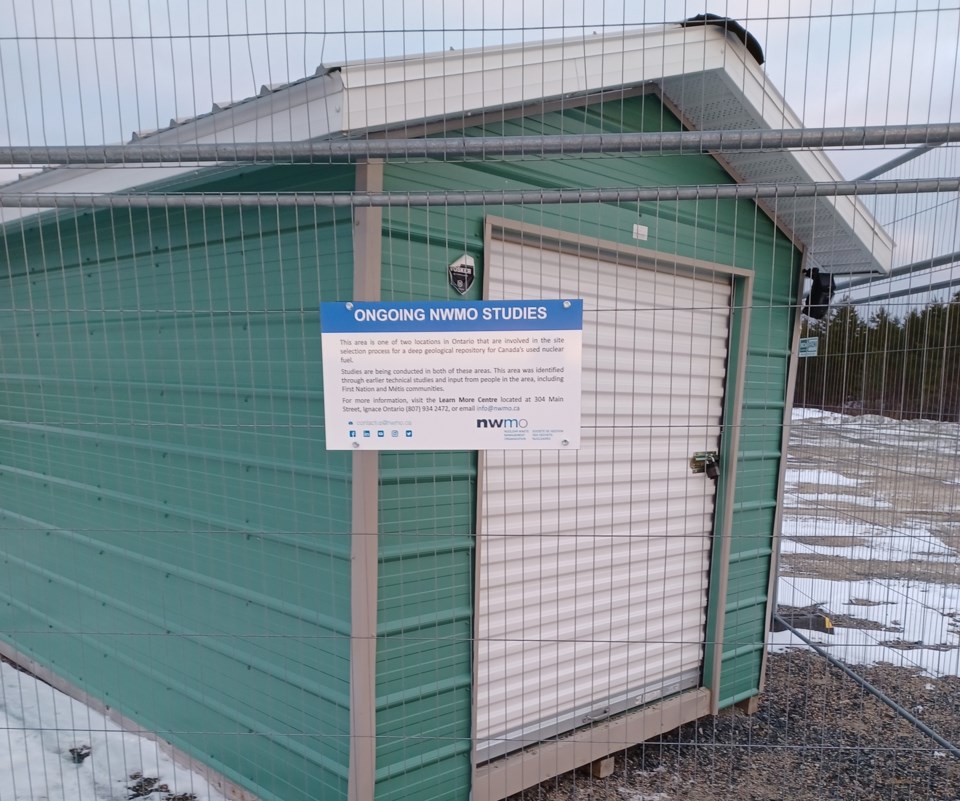IGNACE — This township along the Trans-Canada Highway may be Canada first host municipality for an underground nuclear waste facility, but it might not be the only one — eventually.
The Nuclear Waste Management Organization, which plans to build a deep geological repository (DGR) west of Ignace, is in the early stages of planning for a second one.
The proposed repository between Ignace and Wabigoon Lake would be for nuclear power plants’ spent fuel, considered high-level waste.
But the NWMO sees a need for a second repository, somewhere in Canada, to manage intermediate-level waste and high-level radioactive waste that isn't fuel from generating stations.
That includes used parts from power plants as well as medical nuclear waste, items currently kept in above-ground and in-ground silos. The management organization says a longer-term solution is needed.
An NWMO official told The Canadian Press “a final siting process” for the second repository will be developed after public consultations.
The process that culminated in the selection of the Revell site last November is a good template for the NWMO to use, Jake Pastore, the Township of Ignace’s outreach lead, said Tuesday.
“A lot of lessons were learned for NWMO from what we did, how we went through our process,” he said. “I think they're going to be taking a lot of that information and integrating it.
“It may be a little bit different, but I suspect … that they would follow some of the processes that worked well in Ignace.”
Ignace, along with several other municipalities, identified itself to the NWMO as a potential host municipality in 2010.
The federally mandated, industry-funded nuclear body eventually narrowed the list down to two finalists for host municipality: Ignace and South Bruce.
After a years-long “willingness process,” a public vote and a unanimous township council vote to proceed as a potential host municipality, the Revell site south of Highway 17 was chosen.
Ignace, east of the Revell site, and Wabigoon Lake Ojibway Nation, west of the site, were named host communities for the DGR.
That repository, which would be the first in Canada, must still clear regulatory and licensing hurdles before construction.
The NWMO has projected construction of the repository hundreds of metres below ground to begin in the early 2030s and be completed perhaps a decade later for the long-term placement of millions of bundles of spent nuclear fuel in the decades that follow.
A spokesperson told Newswatch the NWMO is still in the very early stages of its journey to building a second underground repository for Canadian nuclear waste.
“We’re at the first step right now,” said Craig MacBride, the organization’s public and media relations manager.
“We’re developing the draft process to select a safe site with informed and willing hosts, and we'll be sharing that with the public for input beginning this year.”
MacBride explained that “intermediate-level waste includes used components such as filters, resins and pumps from nuclear power plants, research reactors and medical isotope manufacturers. This waste produces minimal heat but requires a higher level of containment and isolation for longer time periods than what is needed for low-level waste.”
The high-level waste intended for the repository the NWMO wants to build in northwestern Ontario is “mostly used nuclear fuel, but there is a small amount of non-fuel high-level waste that comes from other activities such as medical isotope production,” he said by email.
“This waste can generate a significant amount of heat and radioactivity and requires containment and isolation for hundreds of thousands of years in a deep geological repository.”
The NWMO’s Implementation Plan 2025-2029 says site selection planning for a second repository begins with drafting a proposed siting process and submitting it for public comment.
The next step is to “engage with Canadians and Indigenous peoples to finalize what the site selection will look like.”
That will be followed by starting the site selection process and “assessments of communities,” according to the implementation plan.
MacBride said a site likely won’t be chosen until the mid-2030s and a repository construction at that location likely wouldn’t be completed before 2050.




